A new approach to ADHD therapy
Brigitte Wiesendanger, BICOM therapist
Imagine that you have reached the limits of your work. It happens to me from time to time.
We, as therapists, are pushed to our limits with ADHD clients. For such clients, I need to be creative to find new solutions.
Often, simply observing nature can reveal the simplest of solutions.
My therapy approaches can easily be integrated into your work, thanks to their simplicity and efficiency. Furthermore, I will show you a basic framework that you can individually incorporate into your own programme or use to expand it.
1. What is ADHD?
Professor Gerald Hiither, who works intensively with the topic of ADHD, claims: “ADHD is not an illness.”
What is it then?
Attention deficit/hyperactivity disorder belongs to a group of behavioural and emotional disorders which first appear in childhood. The key problems linked to ADHD concern attentiveness, impulsiveness and self-regulation, which is sometimes accompanied by restlessness.
Current scientific knowledge accredits these phenomena to a delay in neurobiological development.
2. What are the effects on the subjects and the environment?
Their attention span is on the shorter side. Clients tend to quickly alternate between their activities, often leaving old projects unfinished.
This can quickly cause disorder to reign.
Patience is a great challenge. Those affected by ADHD are impatient and impulsive, whether it be during conversations, when they cannot wait until the other person has finished speaking, or eating, when they gobble their food down immediately.
Time management also often becomes an issue. Everything must happen immediately.
In some cases, muscle control is underdeveloped. Body exercises can certainly help with this.
I have observed many cases of children talking a mile a minute, sometimes in a very chaotic manner.
This can be attributed to the fact that children with ADHD think 10 times faster than others would normally. Therefore, they have to say everything all at once to ensure their path of thought isn’t lost. Because of this, these children are very talkative, but they often speak with incoherent sentences. This incoherence often leads to difficulty understanding these children.
Children with ADHD sleep very little. This means that they struggle to fall asleep in the evening and in the morning they are tired but they have to get up. Something which has a major effect on their attention span in school.
Parents often become overwhelmed due to the amount of energy their children require and, because of the constant effort, they are unable to relax themselves.
The children are also unable to recognise danger, so parents have to focus their attention on daily hazards. That’s just a further element of stress.
Children with ADHD burn much more energy than their counterparts due to their high rate of movement. Therefore, their energy reserves need to be replenished. Sugar is known to be a quick energiser, and kids do love sweets.
The brain needs both oxygen and sugar to function. How can we find the correct dosage or an alternative to sugar?
And much more.
Seemingly, the last resort is often Ritalin.
Or, you could work with bioresonance.
3. What to do?
We find new approaches by being creative.
As a kinesiologist, I don’t work on the symptom, but I look at their background in order to assess the root cause. Instead of laboriously going through the many programmes and scrolling through, I limit myself to the priorities that I have tested kinesiologically. In my experience, the symptoms are resolved thereafter. Is everything balanced?
The muscle test is a great way to find stress and to simultaneously identify the solution by changing the indicators.
Two thoughts continually preoccupy me.
First: Which systems/organs are imbalanced? And With which programme can I regulate the system?
Second: The time factor. Treatment must not last longer than 10 minutes. In the programme booklet, there isn’t an ADHD section as such.
A regular bioresonance programme with all the frills is far too much. Those affected by ADHD would never endure that.
The difficulty is that I have to reconcile these two aspects; the background of the system and time.
To that end, I limit myself as much as possible.
Often, the child is so caught up in their own development, bringing every challenge into equilibrium, that they miss out on developing the more difficult skills, e. g. being able to coordinate sensory perceptions.
The development of the sensory organs is structured in this sequence. If the vestibular system fails as a result of stress, the senses based on this are also in danger.
That is why I first look for stress.
a) Which system or organ is imbalanced?
b) And which organ helps me to reverse the polarity?
The liver and nervous system have appeared to provide a solution for pole reversal several times.
In this respect, it’s exciting because it becomes logical when you look more closely and the connections are revealed.
All memories and experiences are stored in the liver. Furthermore, the liver is THE detoxifying organ.
As we all know, not just physical and chemical substances can contaminate the body. Likewise, emotional damage and psychological conditions in the form of punishment, reprimand, prohibition and exposure are also a part of the contamination.
This is the reason why a liver programme is so extensive and efficient.
Nerve damping is equally understandable in terms of the nervous system, as it can balance the inner unrest; the expression of the nervous system.
Following on from this, there are 2 programmes:
Liver acute: 310.9
Nerve damping: 911.1 and 423.5
To my surprise, the programme lasts exactly 10 minutes.
These two programmes, once a week, helped clients achieve better behaviour, a longer attention span, improved sleeping behaviour and better concentration. After only 4 treatments, the clients had already noticeably calmed down.
The largest problem, however, is that the sensory perception in these children is extremely sensitive and, because of this, they quickly become overwhelmed. That entails continually working on the issue.
It is an illusion to believe that the problem will be solved after a few sessions. Moreover, symptoms may still be observed in other areas, such as diet, allergies, electrosmog, sensory perceptions, and so on.
My approach is now to gradually supplement individual new treatment programmes for the eyes, ears, small intestine (digestion) or what is required. The hormonal strain on the thyroid was particularly significant, which makes sense insofar as the thyroid slows down or inhibits brain development if it is suffering from an iodine deficiency.
From the 10137 sequence, I only used the middle programme, No. 981.1, in order to minimise the time strain placed on the client.
When working with some clients I observed a build-up of energy which quickly depleted, almost as if it was leaking.
4. I can show you clearly with Kirlian photography
The preschool-aged client at their first session.
The liver and gall bladder area is weak.
The nervous system area also demonstrates a lack of energy.
After bioresonance treatment
The energy levels have been replenished and distributed all around.
In the next two illustrations, we can see that after the 6th session, we are back to a situation similar to that at the beginning of therapy. The client has fundamentally more energy. His family situation has, however, dramatically changed, as his grandfather, who he was very close to, has died of cancer.
5. Further thoughts on possible therapeutic approaches
This is all about the possibilities. Test what is currently necessary. Gradually add programmes in order of priority and, if possible, only one at a time.
· Treat sensory perceptions with bioresonance programmes
Vestibular and auditory system: Hearing
Tactile system: Large intestine
Sight: Eyes
Movement, proprioception: Small intestine (personal power)
Brain: Nerves
Hormones: Meridians triple warmer,
hormonal balance
Thyroid: Iodine deficiency, hyperfunction hormonal balance
· Children with ADHD vibrate at a higher frequency, which you, as a parent, carer or therapist, can turn into aggression. The normal reaction when communicating with another person on an energetic level is to adjust your own frequency and to control the vibrations. If the vibration is very high, this can cause agression. With Ritalin, this frequency is broken and the clients often seem apathetic and no longer themselves.
For this reason, I prescribe Ritalin in the programme for information and also add the BICOM optima®l frequency which I have previously tested.
You can also give your clients exercises as homework, with which the clients learn how to slow down their movements in order to calm down.
e. g. walk slowly for a whole minute and concentrate only on your own feet, feel the moment.
Fix your sight on one point on the wall for one minute.
Drink water.
Walk at your own pace.
Now, take the new approach and integrate it into your work. Experiment with it. Be curious and creative.
I am convinced that you and your clients will be pleased with the great results. If the system falls back into old patterns, there are other possibilities.
Make your clients say out loud: “I love myself.”
Perhaps a saboteur course could make a real difference. Saboteurs block recovery. “I want to be healthy”, “it helps me do well”, “I will accept changes to my well-being” and similar phrases can play an important role.
Share your experiences with me. I would be more than happy to exchange ideas with you. I look forward to hearing from you!
You should also discuss with your colleagues, e.g. during the course of the rest of the conference. That way, you will come up with even more ideas, that’s for sure. Good luck!
